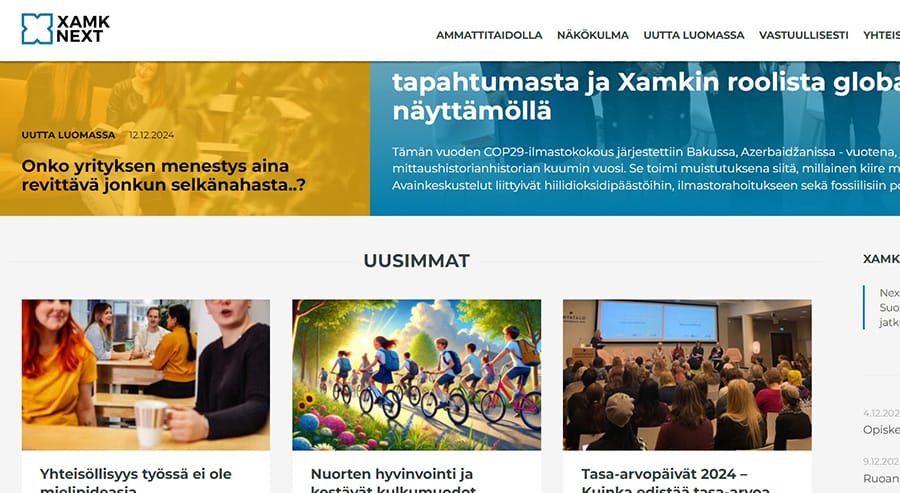Are you making the most of effective online learning techniques?
Today, capturing students’ attention remains challenging. Various theories — from Bloom’s Taxonomy and Constructivist Theory to Self-Determination Theory — offer insights into effective online teaching. Integrating the latest research on memory and retention gives educators a powerful toolkit for engaging and impactful digital instruction. But have these “old school” strategies translated effectively into the online world? Now that online learning is routine, it’s worth examining which practices survived the transition and emerged as best practices in digital education.
Researching these best practices takes time, so here’s a sneak peek at some strategies for designing online courses that not only convey information but also ignite motivation, support retention, and enhance practical understanding.
Chunking content
Cognitive Load Theory suggests that breaking information into smaller chunks allows the brain to process and retain it more effectively. Visual aids help lighten the cognitive load, enabling the brain to absorb information more easily. In the fast-paced online environment, studying in shorter bursts makes it easier to stay focused and fit learning into busy schedules.
Incorporating mindfulness breaks
In longer sessions, encourage brief breaks for mindfulness or breathing exercises to maintain attention and prevent fatigue. Mindfulness breaks reduce cognitive strain, helping learners sustain focus. For instance, a short meditation video or a prompt to listen to a podcast during a walk can be refreshing. The University of Minnesota integrated brief mindfulness activities into its online courses, resulting in improved concentration and reduced stress among students.
Quizzes for immediate reinforcement
Quizzes after each module allow students to review key concepts immediately, reinforcing memory and highlighting any knowledge gaps.
Flashcards for spaced repetition and self-testing: Flashcards enable students to revisit concepts at intervals, promoting self-assessment and strengthening memory.
- Why it works: Spaced repetition improves long-term retention by helping students revisit key ideas over time (Cepeda et al., 2006).
- Suggested tool: H5P’s flashcard tool is ideal for low-stakes reviews, while its Cornell Notes feature aids reflection and allows students to create questions for future study.
Immediate feedback on interactive quizzes: Quizzes with instant feedback, like drag-and-drop activities, allow students to adjust their understanding in real-time.
- Why it works: Formative assessment with immediate feedback supports on-the-spot corrections, reinforcing comprehension (Black & Wiliam, 1998).
- Suggested tool: H5P’s drag-and-drop and quiz features.
Reflection exercises
Ending each module with a reflection prompt helps students consolidate their learning and relate it to their personal experiences.
- Why it works: Reflection promotes understanding and retention by linking new knowledge with personal insights (Vygotsky, 1978).
- Suggested tool: Journaling tools or discussion boards for structured reflection and interaction.
Gamification
Adding elements like points, badges, and progress bars provides a sense of achievement, encouraging students to stay engaged.
- Why it works: Gamification taps into intrinsic motivation, offering rewards and progress markers that boost engagement and course completion (Hamari et al., 2014).
- Suggested tool: H5P’s progress-tracking and badge features. Learn already has many of these features, and they work effectively!
Allowing students to choose learning paths
Giving learners options lets them customize their experience, fostering a sense of ownership. This non-linear approach could be used more frequently — not everyone benefits from a strictly linear study path.
- Why it works: Autonomy enhances motivation and engagement, leading to more active learning (Deci & Ryan, 1985).
Structured communication and regular announcements
In online learning, frequent communication is essential for keeping students informed and engaged. Regular announcements and updates clarify requirements and address common questions. Forums on Learn are especially useful for this purpose.
- Example: Baldwin & Trespalacios (2017) recommend posting announcements twice a week to ensure course continuity and engagement.
Creating community
Discussion boards enable meaningful exchanges that replicate in-class discussions. For maximum effectiveness, instructors should clearly outline participation expectations and provide timely feedback.
- Example: Cornell et al. (2019) argue that fostering a “sense of community” through forums helps students feel supported and engaged, which is crucial in online settings.
- Suggested tool: Padlet boards with prompts and images for interactive discussions.





